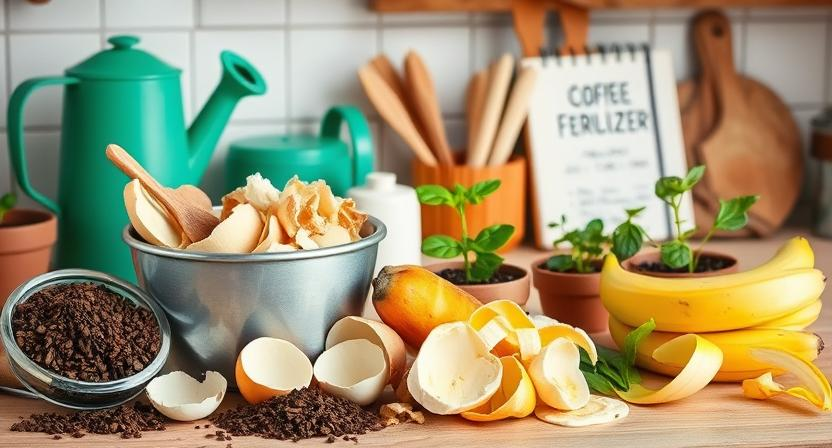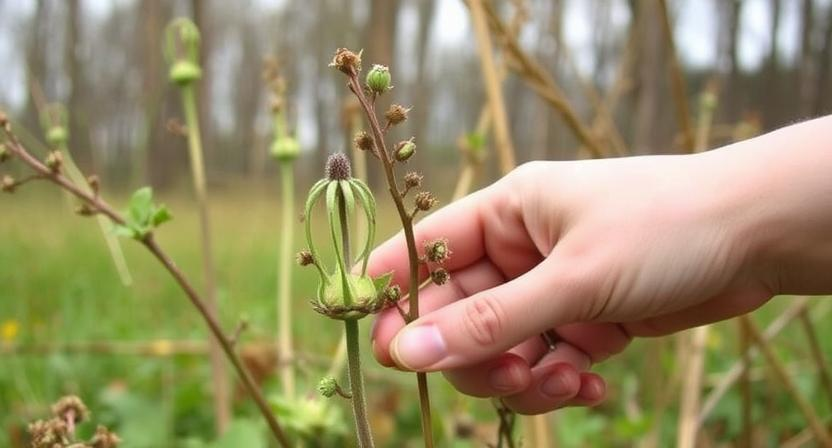Making Homemade Fertilizer from Everyday Materials

Benefits of Homemade Fertilizer

Homemade fertilizers offer a cost-effective solution for gardeners looking to nourish their plants without breaking the bank. By utilizing common household items like coffee grounds, eggshells, and vegetable scraps, individuals can create nutrient-rich fertilizers that promote healthy plant growth. Not only does this save money on expensive store-bought fertilizers, but it also reduces waste by repurposing kitchen scraps into valuable resources for the garden.
In addition to being budget-friendly, homemade fertilizers provide a sustainable alternative to chemical-based products. By using organic ingredients, gardeners can minimize their impact on the environment while still achieving robust plant health. Homemade fertilizers also allow for greater control over the ingredients used, ensuring that plants receive the specific nutrients they need for optimal growth and development.
• Homemade fertilizers are cost-effective and save money on store-bought products
• Utilizing household items like coffee grounds, eggshells, and vegetable scraps creates nutrient-rich fertilizers
• Reduces waste by repurposing kitchen scraps into valuable resources for the garden
• Provides a sustainable alternative to chemical-based fertilizers
• Organic ingredients minimize impact on the environment
• Greater control over nutrients ensures optimal plant growth and development
Common Household Items that Can be Used for Homemade Fertilizer
Eggshells, coffee grounds, and banana peels are common household items that can be repurposed into effective homemade fertilizers. Eggshells are a great source of calcium, which is essential for plant growth and development. Simply crush the eggshells and sprinkle them around the base of your plants to provide a slow-release calcium boost. Coffee grounds are rich in nitrogen, making them a beneficial fertilizer for plants that require extra nitrogen for healthy foliage growth. You can mix coffee grounds into the soil or steep them in water to create a nutrient-rich liquid fertilizer.
Banana peels are another excellent source of nutrients for plants, including potassium, phosphorus, and calcium. To make a homemade banana peel fertilizer, chop up banana peels and bury them in the soil near your plants. As the peels decompose, they will release essential nutrients into the soil, promoting healthy plant growth. These common household items are not only inexpensive but also environmentally friendly ways to provide your plants with the nutrients they need to thrive.
• Eggshells are a great source of calcium for plants
• Crush eggshells and sprinkle around the base of plants for slow-release calcium boost
• Coffee grounds are rich in nitrogen, beneficial for foliage growth
• Mix coffee grounds into soil or steep in water for liquid fertilizer
• Banana peels contain potassium, phosphorus, and calcium for plant nutrients
• Chop up banana peels and bury near plants to release essential nutrients as they decompose
Different Types of Homemade Fertilizer Recipes
When it comes to homemade fertilizer recipes, there is a wide array of options that gardeners can consider to boost the health of their plants. One popular choice is a compost tea, made by steeping compost in water to create a nutrient-rich liquid that can be easily absorbed by plant roots. Another simple recipe involves mixing banana peels with water to create a potassium-rich fertilizer that helps promote strong root growth and overall plant health.
For gardeners looking to add more nitrogen to their soil, a homemade fish emulsion fertilizer can be a great choice. This fertilizer is made by blending fish scraps with water and allowing the mixture to ferment for a few weeks before diluting it with water for use. Another effective recipe is a mix of eggshells and water, which provides a calcium boost to plants, helping to prevent blossom end rot in tomatoes and other calcium deficiencies in vegetables. These homemade fertilizer recipes offer natural and cost-effective ways to nourish plants and promote healthy growth without resorting to store-bought options.
• Compost tea: steep compost in water to create a nutrient-rich liquid
• Banana peel fertilizer: mix banana peels with water for potassium-rich fertilizer
• Homemade fish emulsion fertilizer: blend fish scraps with water and ferment before use
• Eggshell fertilizer: mix eggshells with water for calcium boost
How to Properly Store Homemade Fertilizer
When storing homemade fertilizer, it is crucial to keep in mind that proper storage is essential to maintain its effectiveness. Store your homemade fertilizer in a dry and cool place to prevent moisture from affecting its quality. Make sure to keep it in airtight containers to avoid exposure to air, which can lead to the breakdown of nutrients. Label each container clearly with the type of fertilizer and the date it was made to track its freshness and potency.
Avoid storing homemade fertilizer near sunlight or heat sources, as this can degrade its nutrients over time. It is recommended to store the fertilizer away from children and pets in a secure location. Regularly check the storage area to ensure there are no leaks or spills that could contaminate other materials. By following these storage guidelines, you can prolong the shelf life of your homemade fertilizer and ensure it remains effective for your plants’ growth and health.
• Store homemade fertilizer in a dry and cool place
• Keep it in airtight containers to prevent exposure to air
• Label each container clearly with type of fertilizer and date made
• Avoid storing near sunlight or heat sources
• Store away from children and pets in secure location
• Regularly check for leaks or spills in storage area
Key Nutrients for Plants and How Homemade Fertilizer Provides Them
Plants require several key nutrients to thrive, including nitrogen, phosphorus, and potassium. These essential nutrients play crucial roles in various aspects of plant growth and development. Nitrogen aids in leaf and stem growth, phosphorus supports root development and flower formation, while potassium helps with overall plant health and disease resistance.
Homemade fertilizers can provide these essential nutrients to plants in a natural and cost-effective way. For example, compost made from kitchen scraps and yard waste can be rich in nitrogen, benefiting leafy plants like lettuce and spinach. Similarly, bone meal, a common household item, is a great source of phosphorus that can help root vegetables like carrots and beets thrive. By understanding the nutrient needs of different plants and tailoring homemade fertilizer recipes accordingly, gardeners can ensure their plants receive the necessary nutrients for robust growth and fruitful harvests.
• Nitrogen aids in leaf and stem growth
• Phosphorus supports root development and flower formation
• Potassium helps with overall plant health and disease resistance
Homemade fertilizers can provide these essential nutrients to plants in a natural and cost-effective way. For example, compost made from kitchen scraps and yard waste can be rich in nitrogen, benefiting leafy plants like lettuce and spinach. Similarly, bone meal, a common household item, is a great source of phosphorus that can help root vegetables like carrots and beets thrive.
By understanding the nutrient needs of different plants and tailoring homemade fertilizer recipes accordingly, gardeners can ensure their plants receive the necessary nutrients for robust growth and fruitful harvests.
Potential Risks of Using Homemade Fertilizer

One potential risk of using homemade fertilizer is the lack of consistency in nutrient content. Homemade fertilizers may not have a standardized nutrient composition, leading to uneven distribution of essential elements for plant growth. This variability can result in under or over-fertilization, impacting plant health and growth negatively. It is crucial for gardeners to properly test and monitor the nutrient levels in homemade fertilizers to avoid these issues.
Moreover, another risk associated with homemade fertilizers is the possibility of contamination. Using organic materials like manure or kitchen scraps in homemade fertilizer can introduce pathogens, weed seeds, or harmful chemicals into the soil. Improperly composted ingredients may not reach high enough temperatures to kill off these contaminants, posing a threat to plant health and the surrounding environment. Gardeners should be cautious when sourcing and preparing ingredients for homemade fertilizers to minimize these contamination risks.
• Inconsistent nutrient content in homemade fertilizers can lead to under or over-fertilization
• Proper testing and monitoring of nutrient levels is crucial for plant health
• Contamination risks from pathogens, weed seeds, or harmful chemicals in homemade fertilizers
• Improperly composted ingredients may not kill off contaminants, posing a threat to plants and the environment
• Gardeners should be cautious when sourcing and preparing ingredients for homemade fertilizers
Best Practices for Applying Homemade Fertilizer
When it comes to applying homemade fertilizer, timing is key. It is essential to understand the growth stage of your plants and their specific nutrient needs to determine the best time to fertilize. Typically, it is recommended to apply homemade fertilizer during the active growing season to ensure maximum absorption of nutrients by the plants. Avoid fertilizing during periods of dormancy or stress, as the plants may not be able to utilize the nutrients effectively.
Another important practice when applying homemade fertilizer is to follow the recommended application rates. Over-fertilizing can lead to nutrient imbalances in the soil, causing harm to the plants and potentially impacting the environment. Be sure to measure and apply the fertilizer accurately according to the specific requirements of your plants to promote healthy growth without causing any harm.
• Timing is key when applying homemade fertilizer
• Understand the growth stage of your plants and their nutrient needs
• Apply fertilizer during active growing season for maximum absorption
• Avoid fertilizing during periods of dormancy or stress
• Follow recommended application rates when applying homemade fertilizer
• Over-fertilizing can lead to nutrient imbalances in the soil
• Measure and apply the fertilizer accurately according to plant requirements
• Promote healthy growth without causing harm to plants or environment
Understanding the Nutrient Needs of Different Plants
Different plants have varying nutrient requirements based on their growth stage and type. For example, leafy greens like spinach and lettuce require higher amounts of nitrogen to promote leafy growth, while fruiting plants such as tomatoes and peppers benefit from a higher phosphorus content to support flower and fruit development. Root vegetables like carrots and radishes thrive with a balanced mix of nutrients to encourage healthy root formation and overall plant growth.
Understanding the specific needs of each plant variety is crucial for maximizing their growth and yield potential. By providing the right balance of nutrients tailored to the plant’s requirements, gardeners can ensure optimal growth, disease resistance, and overall plant health. Experimenting with different homemade fertilizer recipes and observing how plants respond can help fine-tune nutrient applications for each plant type in your garden.
• Leafy greens like spinach and lettuce require higher amounts of nitrogen for leafy growth
• Fruiting plants such as tomatoes and peppers benefit from higher phosphorus content for flower and fruit development
• Root vegetables like carrots and radishes thrive with a balanced mix of nutrients for healthy root formation
Understanding the specific needs of each plant variety is crucial for maximizing their growth potential. By providing the right balance of nutrients tailored to the plant’s requirements, gardeners can ensure optimal growth, disease resistance, and overall plant health. Experimenting with different homemade fertilizer recipes and observing how plants respond can help fine-tune nutrient applications for each plant type in your garden.
Composting Techniques for Homemade Fertilizer
Also known as “black gold” for gardeners, compost is a key ingredient in homemade fertilizer. To create nutrient-rich compost, start by combining green materials like kitchen scraps, grass clippings, and coffee grounds with brown materials such as dried leaves, straw, and cardboard. Layering these materials in a compost bin or pile allows for optimal decomposition and aeration, creating a balanced environment for beneficial microorganisms to thrive.
Turning the compost pile regularly helps speed up the decomposition process and ensures that the materials are breaking down evenly. Additionally, maintaining the right moisture levels in the compost pile is essential for successful composting. The compost should feel like a damp sponge when squeezed – not too wet that water drips out, but also not too dry. By following these composting techniques, you can produce high-quality homemade fertilizer to nourish your plants and improve soil health efficiently.
• To create nutrient-rich compost, combine green materials like kitchen scraps, grass clippings, and coffee grounds with brown materials such as dried leaves, straw, and cardboard.
• Layering these materials in a compost bin or pile allows for optimal decomposition and aeration.
• Turning the compost pile regularly helps speed up the decomposition process and ensures even breakdown of materials.
• Maintaining the right moisture levels in the compost pile is essential – it should feel like a damp sponge when squeezed.
• Following these techniques will help you produce high-quality homemade fertilizer to nourish your plants and improve soil health efficiently.
How Homemade Fertilizer Compares to Store-Bought Options
Homemade fertilizer and store-bought options differ in several key aspects. One of the main differences is the control over ingredients. With homemade fertilizer, gardeners have the flexibility to tailor the nutrients based on their plant’s specific needs. This level of customization is often lacking in commercial fertilizers, which are designed for general use and may not address the individual requirements of different plants.
Additionally, homemade fertilizer tends to be more environmentally friendly compared to store-bought alternatives. Many commercial fertilizers contain synthetic chemicals that can harm the soil, waterways, and beneficial organisms in the garden. In contrast, homemade fertilizers often utilize natural and organic ingredients, reducing the risk of pollution and promoting overall ecosystem health. By choosing homemade fertilizer over store-bought options, gardeners can play a role in promoting sustainable gardening practices and reducing their environmental impact.
• Homemade fertilizer allows for control over ingredients
• Tailored nutrients based on plant’s specific needs
• Commercial fertilizers designed for general use
• Homemade fertilizer is more environmentally friendly
• Commercial fertilizers contain synthetic chemicals harmful to soil and waterways
• Homemade fertilizers utilize natural and organic ingredients
By choosing homemade fertilizer over store-bought options, gardeners can not only provide their plants with customized nutrition but also contribute to a healthier environment. While store-bought options may offer convenience, the benefits of homemade fertilizer in terms of plant health and environmental impact cannot be overlooked. Making the switch to homemade fertilizer is a simple yet impactful way for gardeners to take control of their gardening practices and promote sustainability in their own backyard.
Tips for Maximizing the Effectiveness of Homemade Fertilizer

When using homemade fertilizer in your garden, timing is crucial. It’s best to apply the fertilizer during the active growing season of your plants for maximum uptake of nutrients. Additionally, making sure to water the plants after applying the fertilizer can help in the distribution of nutrients and prevent any potential burning of the plant roots.
Another tip for maximizing the effectiveness of homemade fertilizer is to rotate the types of fertilizers you use throughout the year. By diversifying the nutrients being provided to your plants, you can ensure that they are receiving a balanced diet and not becoming deficient in any essential elements. This practice can also help prevent the accumulation of excess nutrients in the soil, which could lead to imbalances over time.
• Apply homemade fertilizer during the active growing season for maximum uptake of nutrients
• Water plants after applying fertilizer to distribute nutrients and prevent root burning
• Rotate types of fertilizers throughout the year to provide a balanced diet for plants
• Diversifying nutrients can prevent deficiencies and excess accumulation in soil
Environmental Benefits of Using Homemade Fertilizer
Homemade fertilizer offers significant environmental benefits for both your garden and the planet. By utilizing natural ingredients found in your home, you can reduce the need for chemical fertilizers that can harm the soil and surrounding ecosystems. Homemade fertilizers are often biodegradable and gentle on the environment, minimizing the risk of pollution from synthetic additives commonly found in commercial products. This eco-friendly approach to gardening promotes sustainability and reduces the carbon footprint associated with the production and transportation of traditional fertilizers.
In addition to being environmentally friendly, homemade fertilizers can also help reduce waste by repurposing common household items that would otherwise end up in the trash. By composting food scraps, coffee grounds, eggshells, and other organic materials, you can create nutrient-rich fertilizers that nourish your plants while diverting waste from landfills. This sustainable practice not only benefits your garden by improving soil fertility but also contributes to the overall conservation of resources and minimizes the environmental impact of traditional waste disposal methods.
• By utilizing natural ingredients found in your home, you can reduce the need for chemical fertilizers
• Homemade fertilizers are often biodegradable and gentle on the environment
• This eco-friendly approach to gardening promotes sustainability and reduces the carbon footprint associated with traditional fertilizers
• Repurposing common household items like food scraps, coffee grounds, and eggshells helps reduce waste
• Composting organic materials creates nutrient-rich fertilizers that nourish plants while diverting waste from landfills
• Sustainable practices improve soil fertility, conserve resources, and minimize environmental impact
How Homemade Fertilizer Can Save You Money
If you’re an avid gardener looking to save some money, utilizing homemade fertilizer could be a game-changer for your gardening budget. By making your own fertilizer from common household items or waste, you can significantly reduce the costs associated with purchasing commercial fertilizers. Additionally, homemade fertilizers often yield comparable results to store-bought options, providing your plants with the necessary nutrients without breaking the bank.
Many homemade fertilizer recipes can be tailored to suit specific plant needs, allowing you to address the nutrient requirements of different plants in a cost-effective manner. By customizing your fertilizer blends based on the types of plants you are growing, you can ensure optimal growth and health while minimizing expenses. This flexibility and cost-effectiveness make homemade fertilizer an attractive option for budget-conscious gardeners looking to maintain lush and thriving gardens without overspending.
• Homemade fertilizers can save money for avid gardeners
• Making your own fertilizer reduces costs of purchasing commercial options
• Homemade fertilizers yield comparable results to store-bought options
• Recipes can be tailored to suit specific plant needs
• Customizing blends based on plant types ensures optimal growth and health
• Homemade fertilizer is cost-effective and flexible for budget-conscious gardeners
Common Mistakes to Avoid When Making Homemade Fertilizer
One common mistake to avoid when making homemade fertilizer is using excessive amounts of certain ingredients without understanding their impact on plants. While organic materials can be beneficial for plant growth, overloading the fertilizer with these components can lead to nutrient imbalances and potential harm to your plants. It is essential to follow recipes and guidelines closely to ensure a well-balanced fertilizer mix that provides the necessary nutrients without causing harm.
Another mistake to steer clear of is neglecting the importance of proper composting and decomposition processes in homemade fertilizer preparation. Rushing the decomposition stage can result in an immature fertilizer that may contain harmful pathogens or incomplete nutrients. It is crucial to allow enough time for organic materials to break down fully and reach a stable state before using the fertilizer in your garden. By being patient and allowing the ingredients to compost thoroughly, you can ensure a safe and effective homemade fertilizer for your plants.
• Using excessive amounts of certain ingredients without understanding their impact on plants
• Neglecting the importance of proper composting and decomposition processes in homemade fertilizer preparation
One more common mistake to avoid when making homemade fertilizer is overlooking the pH levels of the mixture. Different plants require different pH levels to thrive, so it is crucial to test and adjust the acidity or alkalinity of your fertilizer accordingly. Failure to do so can result in nutrient deficiencies or toxicities that may harm your plants rather than benefit them. By monitoring and adjusting the pH levels of your homemade fertilizer, you can ensure that it provides optimal nutrition for your specific plant species.
Additionally, a mistake often made by DIY gardeners is using contaminated or low-quality ingredients in their homemade fertilizers. Contaminants such as pesticides, herbicides, or heavy metals can be harmful to both plants and soil health. It is essential to source high-quality organic materials from reputable sources and avoid using any questionable substances in your fertilizer mix. By starting with clean and safe ingredients, you can create a healthy and effective homemade fertilizer for your garden.
• Overlooking the pH levels of the mixture
• Using contaminated or low-quality ingredients
DIY Testing Methods for Homemade Fertilizer Quality
One simple DIY testing method for homemade fertilizer quality is the seed germination test. To conduct this test, plant seeds in separate containers with soil treated with your homemade fertilizer and in containers with regular soil. Compare the germination rate, growth speed, and overall health of the seedlings over a period of time. This method can provide insights into the effectiveness of your homemade fertilizer in promoting plant growth.
Another DIY testing method is to monitor the nutrient levels in your soil before and after applying your homemade fertilizer. You can purchase inexpensive soil testing kits or probes from garden centers or online retailers. These kits typically include instructions on how to test for key nutrients like nitrogen, phosphorus, and potassium. By tracking the changes in nutrient levels, you can assess the impact of your homemade fertilizer on the soil and make adjustments to refine your fertilizer recipes for optimal plant nutrition.
• Conduct a seed germination test by planting seeds in soil treated with homemade fertilizer and regular soil
• Compare germination rate, growth speed, and overall health of seedlings over time
• Monitor nutrient levels in soil before and after applying homemade fertilizer
• Purchase inexpensive soil testing kits or probes from garden centers or online retailers
• Test for key nutrients like nitrogen, phosphorus, and potassium
• Track changes in nutrient levels to assess impact of homemade fertilizer on soil
• Make adjustments to refine fertilizer recipes for optimal plant nutrition
How Homemade Fertilizer Can Improve Soil Health

Homemade fertilizers play a crucial role in enhancing soil health by providing essential nutrients that promote plant growth and overall soil fertility. By using organic ingredients in homemade fertilizers, gardeners can enrich the soil with a diverse range of nutrients that support microbial activity and maintain soil structure. This helps in creating a well-balanced ecosystem in the soil, leading to improved water retention, aeration, and nutrient cycling.
In addition to nourishing plants, homemade fertilizers contribute to the long-term health of the soil by fostering beneficial soil organisms and minimizing the risk of nutrient imbalances and harmful chemical buildup. The gradual release of nutrients from homemade fertilizers ensures a sustainable and stable nutrient supply to plants, reducing the likelihood of nutrient leaching and runoff that can negatively impact soil quality. Incorporating homemade fertilizers into gardening practices not only results in healthier plants but also contributes to the overall vitality and resilience of the soil ecosystem.
• Homemade fertilizers enhance soil health by providing essential nutrients
• Organic ingredients support microbial activity and maintain soil structure
• Well-balanced ecosystem in the soil leads to improved water retention, aeration, and nutrient cycling
• Homemade fertilizers foster beneficial soil organisms and minimize nutrient imbalances
• Gradual release of nutrients ensures sustainable supply to plants
• Reduces likelihood of nutrient leaching and runoff that can negatively impact soil quality
Using Homemade Fertilizer in Organic Gardening
When practicing organic gardening, using homemade fertilizer can be a sustainable and cost-effective way to nourish your plants. Homemade fertilizers provide essential nutrients to the soil, promoting healthy growth without the use of synthetic chemicals. By incorporating natural ingredients like compost, manure, or kitchen scraps into your fertilizer mix, you can enrich the soil with the vital elements needed for robust plant development.
Furthermore, homemade fertilizers align with the principles of organic gardening by supporting the overall health of the ecosystem. Unlike some commercially produced fertilizers that may contain harmful additives or contribute to water pollution, homemade fertilizers are typically made from biodegradable materials that pose minimal risks to the environment. By taking a DIY approach to fertilizing your plants, you can reduce your ecological footprint and contribute to a more sustainable gardening practice.
• Homemade fertilizers provide essential nutrients to the soil
• Natural ingredients like compost, manure, or kitchen scraps can be incorporated into the mix
• Enriches the soil with vital elements needed for robust plant development
• Supports the principles of organic gardening by promoting overall ecosystem health
• Made from biodegradable materials that pose minimal risks to the environment
• Reduces ecological footprint and contributes to a more sustainable gardening practice
Incorporating Homemade Fertilizer into Your Gardening Routine
When it comes to incorporating homemade fertilizer into your gardening routine, consistency is key. By making it a regular part of your gardening practices, you can ensure that your plants receive the nutrients they need to thrive. Whether you choose to use compost tea, banana peels, or eggshells, integrating homemade fertilizer into your routine can help improve the overall health and vitality of your garden.
One way to seamlessly incorporate homemade fertilizer is to set aside a specific day each week for fertilizing your plants. This routine can help you stay organized and ensure that your plants are consistently receiving the necessary nutrients for optimal growth. Additionally, keeping track of which plants have been fertilized and when can help you tailor your fertilizing schedule to meet the individual needs of each plant in your garden. By making homemade fertilizer a regular part of your gardening routine, you can promote healthier plants and a more bountiful harvest.
• Setting aside a specific day each week for fertilizing your plants
• Keeping track of which plants have been fertilized and when
• Tailoring your fertilizing schedule to meet the individual needs of each plant in your garden
• Promoting healthier plants and a more bountiful harvest
The Science Behind Homemade Fertilizer
Homemade fertilizers operate on the principle of utilizing natural materials to provide essential nutrients to plants. The decomposition process of organic matter in homemade fertilizers releases nitrogen, phosphorus, potassium, and other micronutrients that are crucial for plant growth. By incorporating elements like eggshells, banana peels, or coffee grounds into homemade fertilizers, gardeners can create nutrient-rich solutions that support healthy plant development.
The science behind homemade fertilizers lies in understanding the nutrient cycles in the soil and how various organic components break down to release essential elements for plant uptake. Through composting and fermentation processes, homemade fertilizers encourage microbial activity in the soil, promoting a healthy ecosystem that aids in nutrient recycling and plant resilience. By aligning with natural processes, homemade fertilizers offer an eco-friendly and sustainable solution for nourishing plants while fostering soil health.
• Homemade fertilizers utilize natural materials to provide essential nutrients to plants
• Decomposition process of organic matter releases nitrogen, phosphorus, potassium, and micronutrients
• Incorporating elements like eggshells, banana peels, or coffee grounds creates nutrient-rich solutions
• Understanding soil nutrient cycles and organic breakdown is key in homemade fertilizer science
• Composting and fermentation processes encourage microbial activity in the soil
• Promotes a healthy ecosystem that aids in nutrient recycling and plant resilience
• Homemade fertilizers offer an eco-friendly and sustainable solution for nourishing plants
Potential Alternatives to Homemade Fertilizer
Looking beyond homemade fertilizer, there are several alternative options available for enriching your soil. One common alternative is commercial organic fertilizers, which are readily available for purchase at garden centers. These products are formulated with natural ingredients to provide essential nutrients for plant growth without the need to make your own concoctions at home. Additionally, some gardeners opt for chemical fertilizers, which can deliver nutrients quickly and in precise amounts, but it’s crucial to follow instructions carefully to prevent over-fertilization and potential harm to plants.
Another alternative to homemade fertilizer is implementing cover crops and green manure. Cover crops such as legumes or grasses can be grown and then tilled into the soil to add organic matter and nutrients. Green manure, on the other hand, involves planting crops specifically for the purpose of being turned back into the soil to improve its fertility. These natural methods can be effective in enhancing soil structure and fertility, providing a sustainable approach to feeding your plants without relying solely on homemade fertilizers.
• Commercial organic fertilizers are formulated with natural ingredients
• Chemical fertilizers provide nutrients quickly but must be used carefully to prevent harm
• Cover crops and green manure can add organic matter and nutrients to the soil
• Green manure involves planting crops specifically for improving fertility




